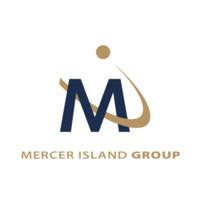The Marketer’s guide to planning an effective agency transition
March 7, 2023

By Steve Boehler
Your agency review has concluded. You’ve found the perfect agency, negotiated a fine SOW and MSA and you’re itching to get started. And (of course) you are in a rush! You need the new agency to hit the ground running and your business depends on the success multiplier that a great agency relationship can provide. You’ve even planned a thorough and disciplined onboarding for the new agency.
There is one more key activity that needs to be managed with excellence: the transition from the outgoing agency to your new agency. The objective is pretty straightforward: to ensure a timely transition of important knowledge, research, data and documentation to the new agency. This transition is critical as the outgoing agency has critical institutional memory that your incoming agency needs from day one.
How do you design and manage an agency transition process that sets up your new agency and your business for success while respectfully engaging with the outgoing agency?
There are six key principles that guide an effective transition from the outgoing to the incoming agency:
Goal Clarity: Start by gaining alignment. It is critical that each party understands, accepts and supports their roles and goals.
The client’s role is to oversee the transition to ensure work fulfillment and new agency ramp up.
The incumbent agency needs to complete work in progress with distinction while efficiently and effectively transferring intelligence and assets to new agency.
And the new agency’s role is to quickly build a solid knowledge base and integrate all disciplines for best possible near-term campaign delivery.
Leadership: Transition leaders are essential to ensure accountability. We specifically recommend that an overall transition leader is appointed, as well as each agency (incoming and outgoing) identifying a transition leader.
Multi-function Team Representation: Both agencies and the client should appoint transition teams with staff representing each key function. These transition teams are in place at the transition kick-off.
Partnering: Functional contacts at each agency are “partnered”. This approach enhances communication and helps to cut through bureaucracy.
Time: Proper time needs to be allotted to ensure thoroughness: the process for a complex transition generally takes 5-8 weeks; a disciplined process can often condense this to roughly 4-6 weeks. A front-loaded transition process benefits all parties. The transition team should front load their planning and effort to complete as much of the transition as possible within the first 2 to 3 weeks, as staffing at the outgoing agency becomes more challenging over time.
Process: The ideal transition process includes weekly “all hands” transition meetings (new agency, old agency, client), as well as frequent, focused deep dive calls. The process is planned with detailed workplans, checklists and schedules. A proven process is important to ensure activities are both effective and efficient, including schedules, routine checkpoint meetings and specific lists of items needing transfer.
Agency transitions are significant undertakings that can help determine success or failure of an agency from the start of a relationship. A thorough process can help the new agency get off to a faster and more productive start while minimizing distractions to your current business. Packaged with the ideal onboarding effort (you can read more here), the new agency will be kicking off work from a much more secure foundation. Need advice on how to run a modern agency review? Read this.
About Author
Steve Boehler, founder, and partner at Mercer Island Group has led consulting teams on behalf of clients as diverse as Ulta Beauty, Microsoft, UScellular, Nintendo, Kaiser Permanente, Holland America Line, Stop & Shop, Qualcomm, Brooks Running, and numerous others. He founded MIG after serving as a division president in a Fortune 100 when he was only 32. Earlier in his career, Steve Boehler cut his teeth with a decade in Brand Management at Procter & Gamble, leading brands like Tide, Pringles, and Jif.































